The Valkyrie was designed in the mid-1950s, when speed improved your odds of surviving a mission.
Line-of-sight radar used to detect American planes meant low-flying bombers had a better chance of reaching their targets.
The high-flying Valkyries speed would no longer be a decisive factor.
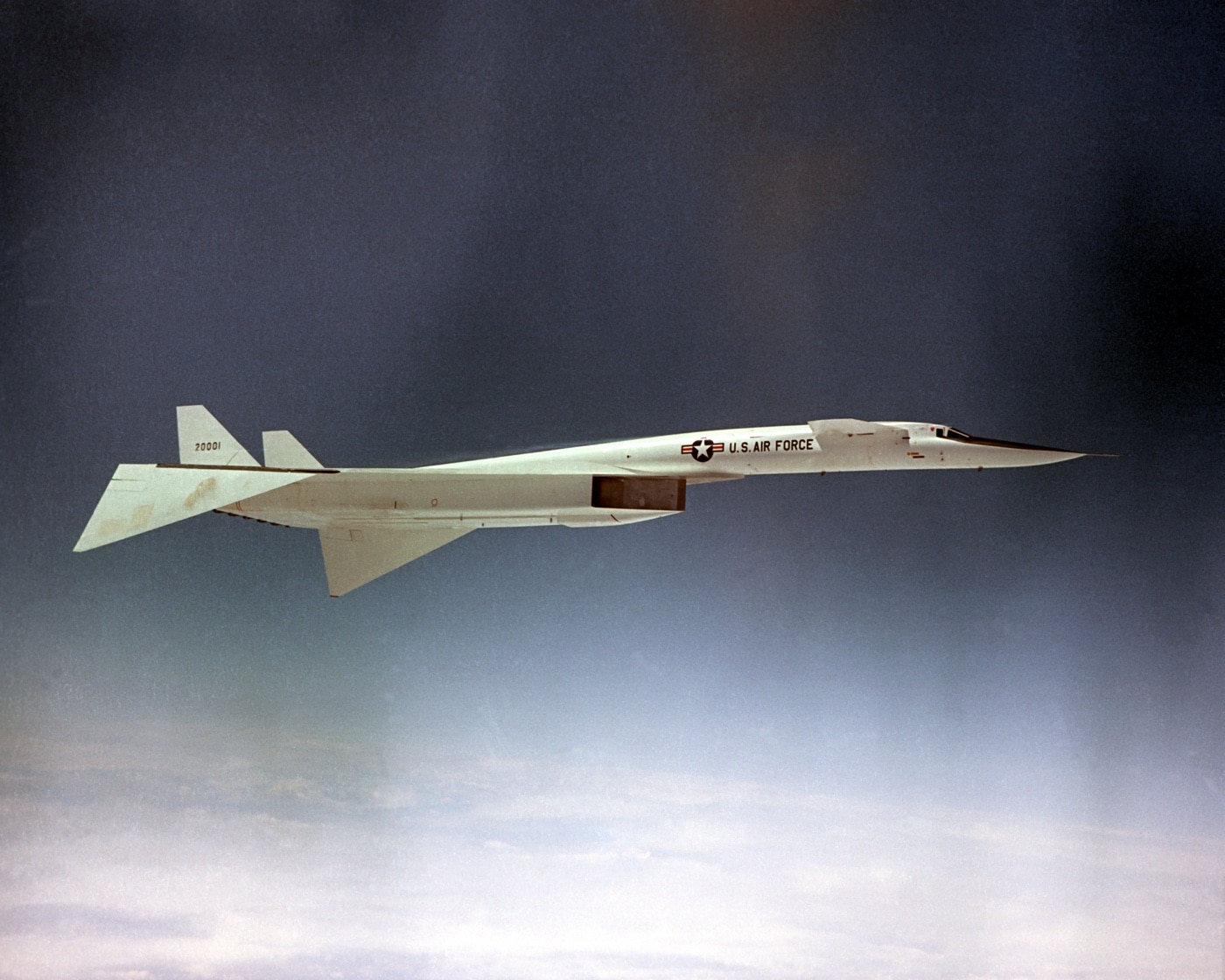
A right side air-to-air view of the North American XB-70 Valkyrie supersonic bomber during a 1960 test flight.
The XB-70 Aircraft Concept
In September 1957, the U.S.A.F.
Shortly thereafter, the Air Force held a Name the B-70 contest and received over 20,000 entries.
Valkyrie was the winning submission.
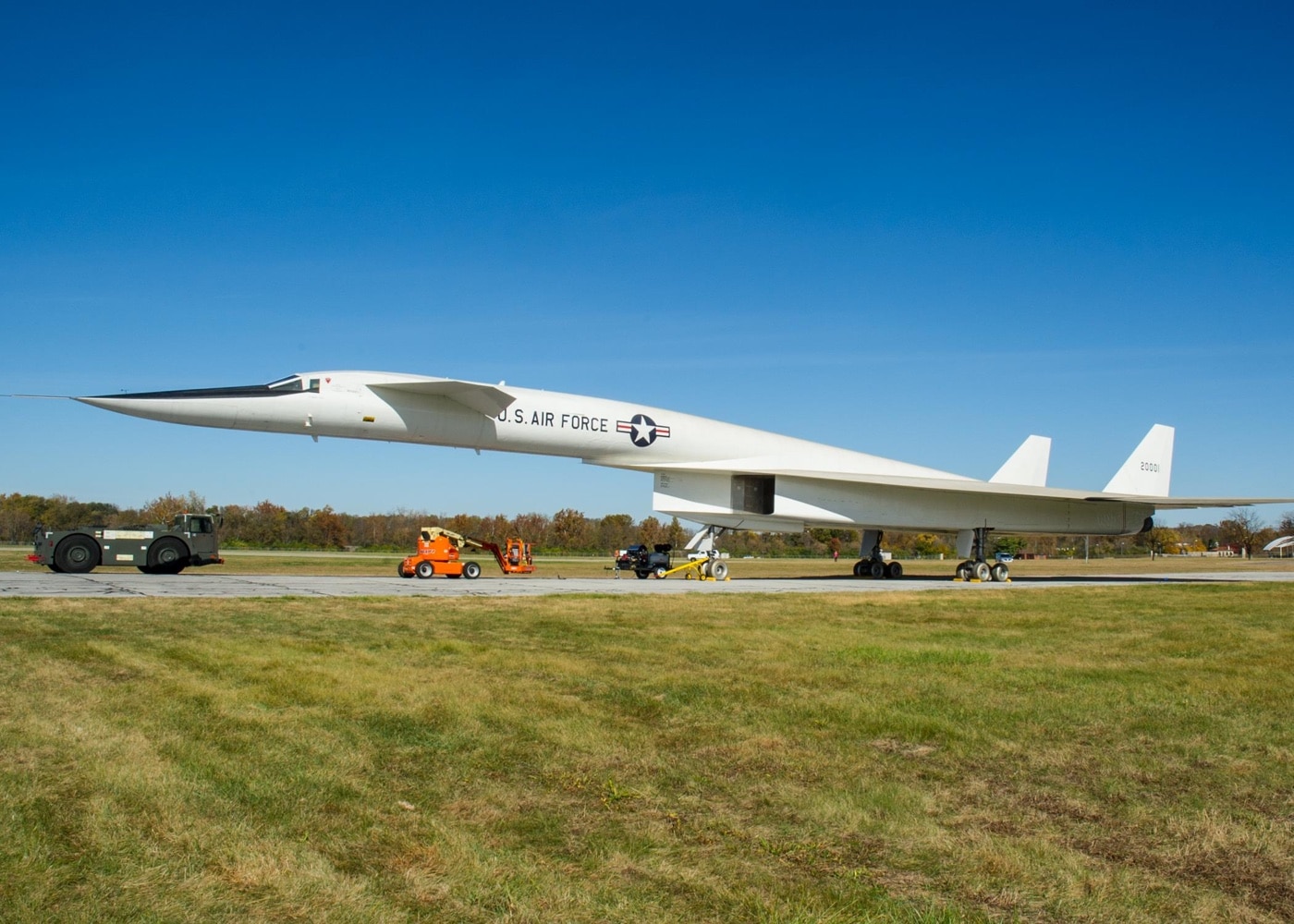
Restoration crews wash the North American XB-70 Valkyrie prior to its move to the new fourth building at the National Museum of the U.S. Air Force on Oct. 26, 2015. Image: Ken LaRock/U.S.A.F.
While test flights were successful, the Valkyrie cancellation also ended this program.
Although the bomber program was canceled, the U.S.A.F.
As with all cutting-edge programs, the Valkyrie used some remarkable new technology.
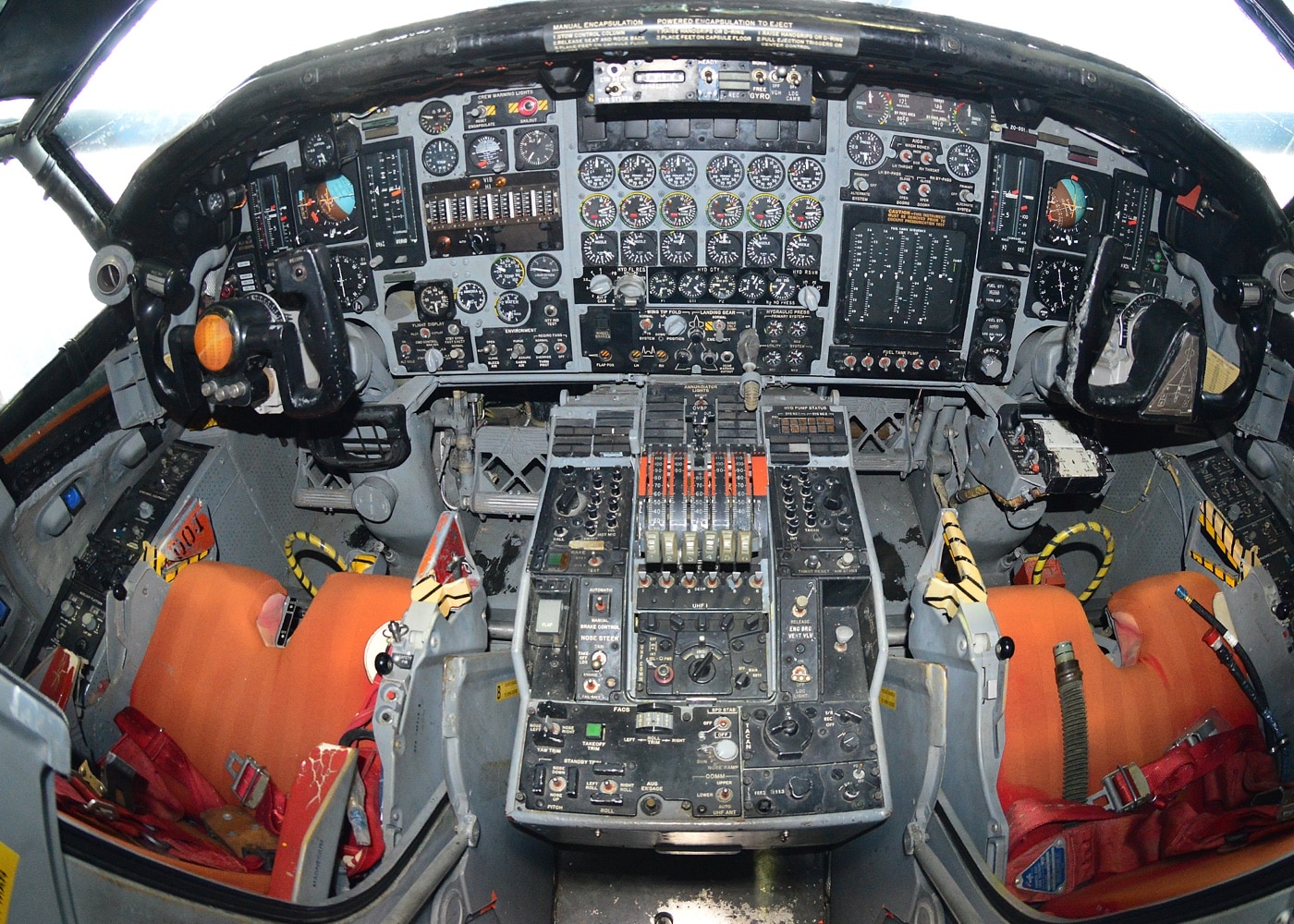
The North American XB-70 cockpit of the remaining aircraft at the National Museum of the U.S. Air Force. Image: Ken LaRock/U.S.A.F.
These temperatures required titanium use at the nose and vertical stabilizers.
This technology was needed to handle the heat and use the shockwave generated by supersonic speeds for compression lift.
Compression Lift
While in supersonic flight, the leading edge of the splitter vane created a shockwave.
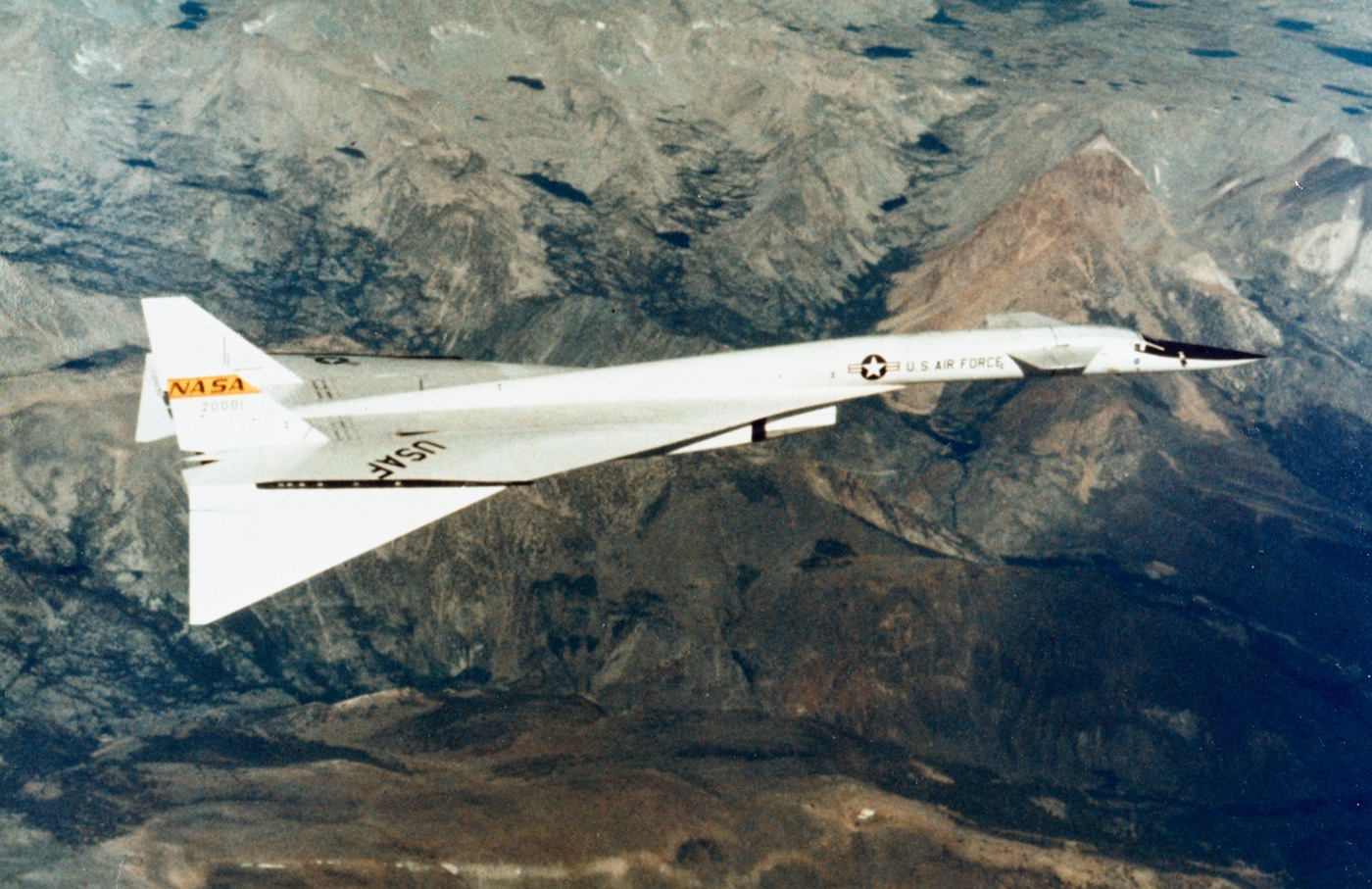
The XB-70 bomber in a NASA test flight with the North American X-15 (out of frame). The XB-70 had a top speed in excess of Mach 3. Image: U.S.A.F.
North American engineers used this shockwave to help create lift for the extremely large plane.
During flight, the pressure under the wings was 40 psi higher than in front of the wave.
North American Super-Sized Six Pack
For the Valkyrie to accomplish its stated mission, it required speed.
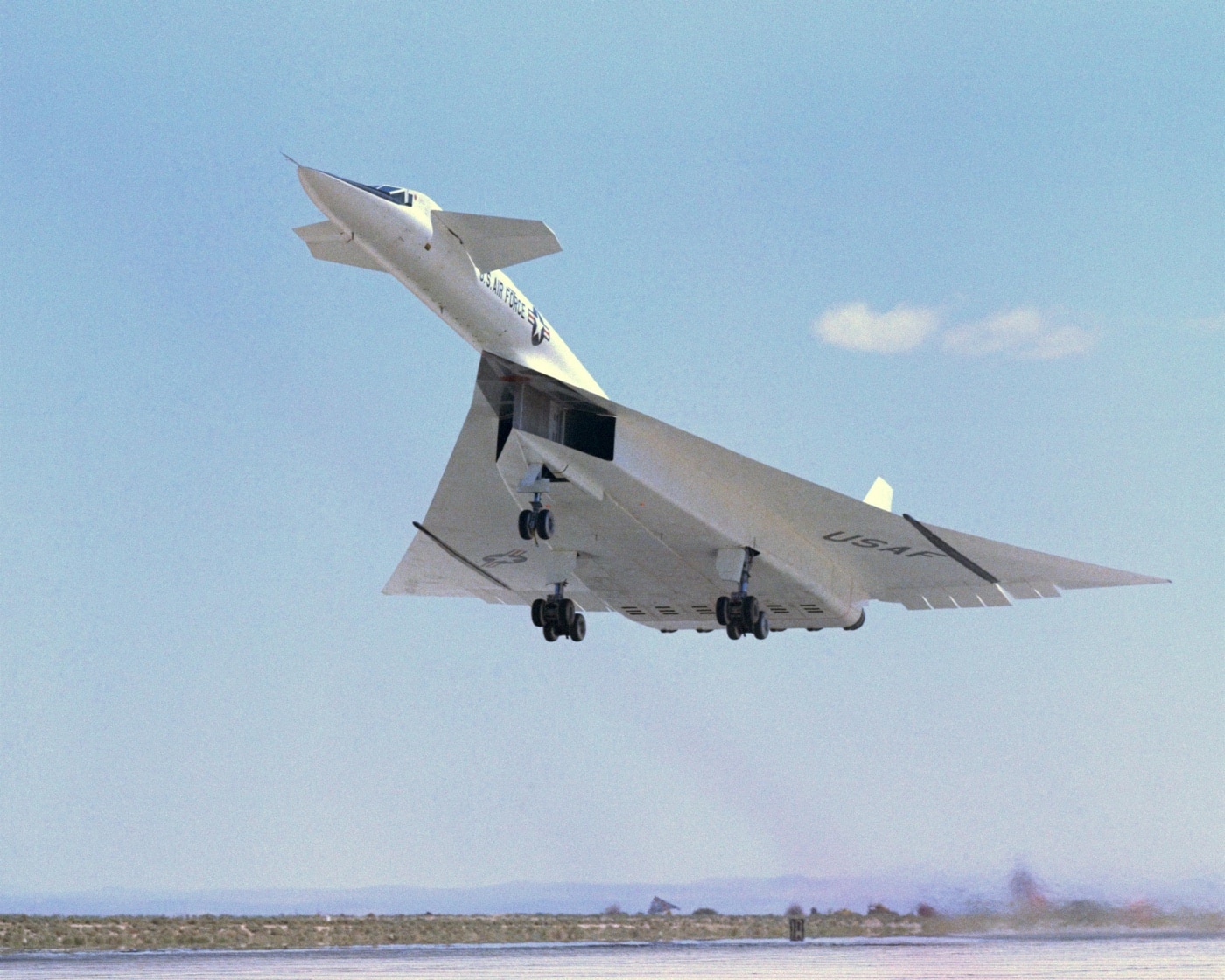
During take-off, the wing tips of the XB-70 were extended straight out to provide a maximum lifting wing surface. Image: NARA
These engines produced 19,000 pounds of thrust each in regular operation and 28,000 pounds while in afterburner.
The fuel was also used for cooling and circulated through heat exchangers before entering the engines.
Everything was going fine, and then disaster struck: a mid-air collision.
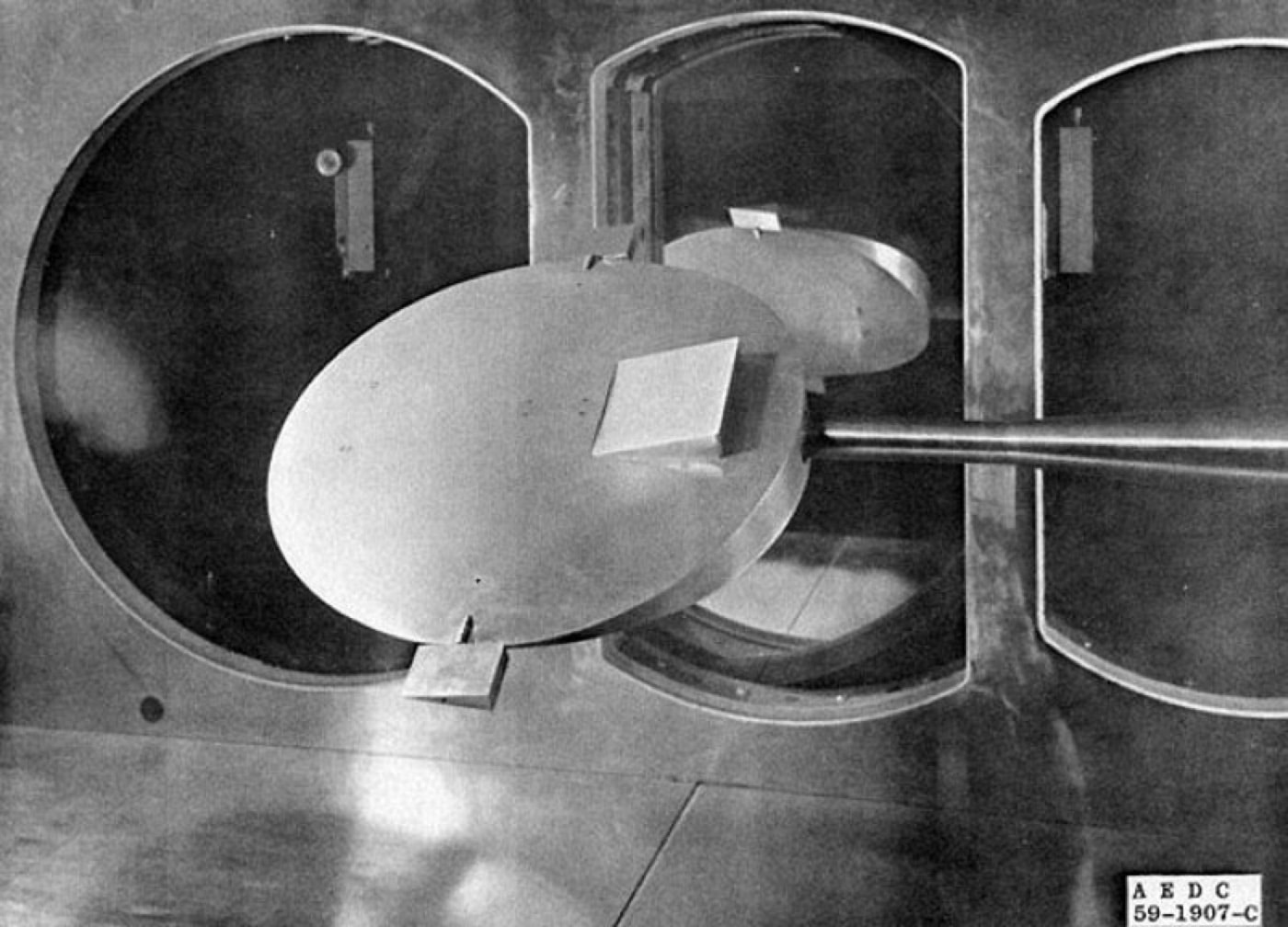
The saucer-shaped Pye Wacket missile prototype. This missile was intended to be a defensive system for the XB-70 bomber. Image: U.S.A.F.
The accident investigation claimed that the F-104 pilot was too close.
and was later found in the design of the Tupolev TU-144 SST due to espionage.
Go to forum thread
National Museum of the United States Air Force
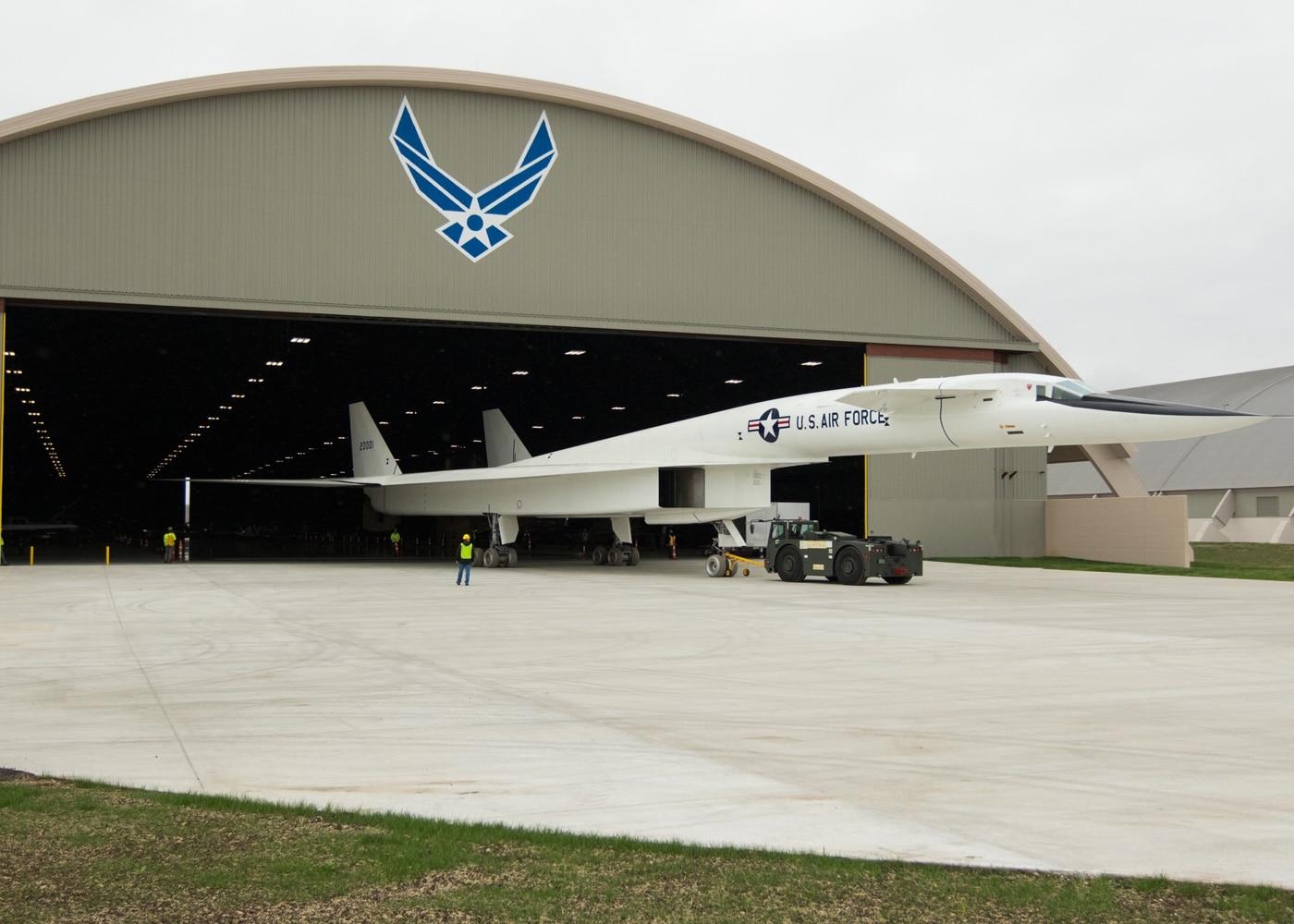
Restoration staff move the North American XB-70 Valkyrie into the new fourth building at the National Museum of the U.S. Air Force on Oct. 27, 2015. Image: Don Popp/U.S.A.F.
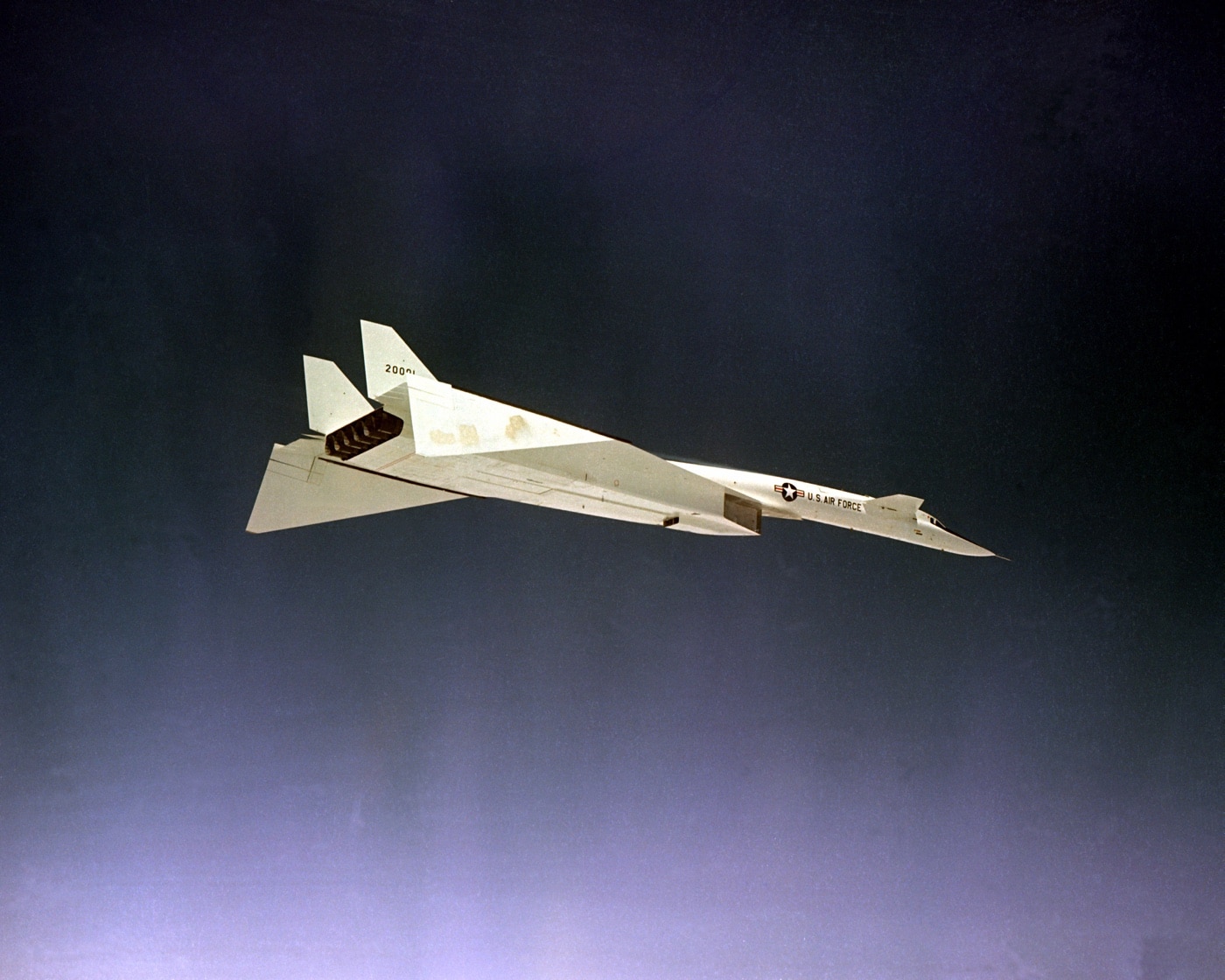
As the leading edge of the splitter vane cuts through the air, it creates a shockwave with pressure under the wings that causes additional lift on the XB-70 bomber. Image: U.S.A.F.
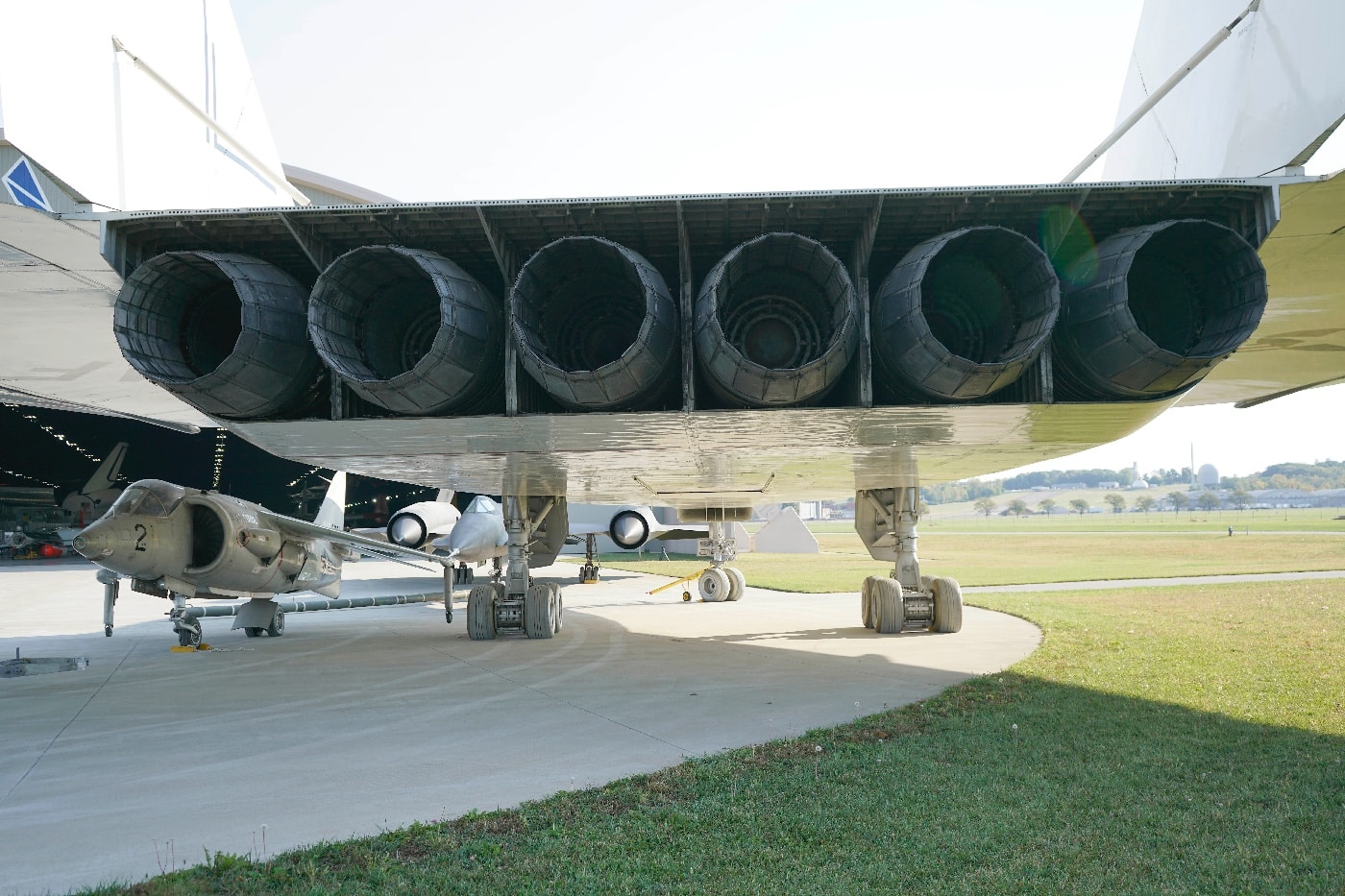
The North American XB-70 Valkyrie had six General Electric turbojet engines that produced roughly 54,000 pounds of combined thrust. Image: Ken LaRock/U.S.A.F.
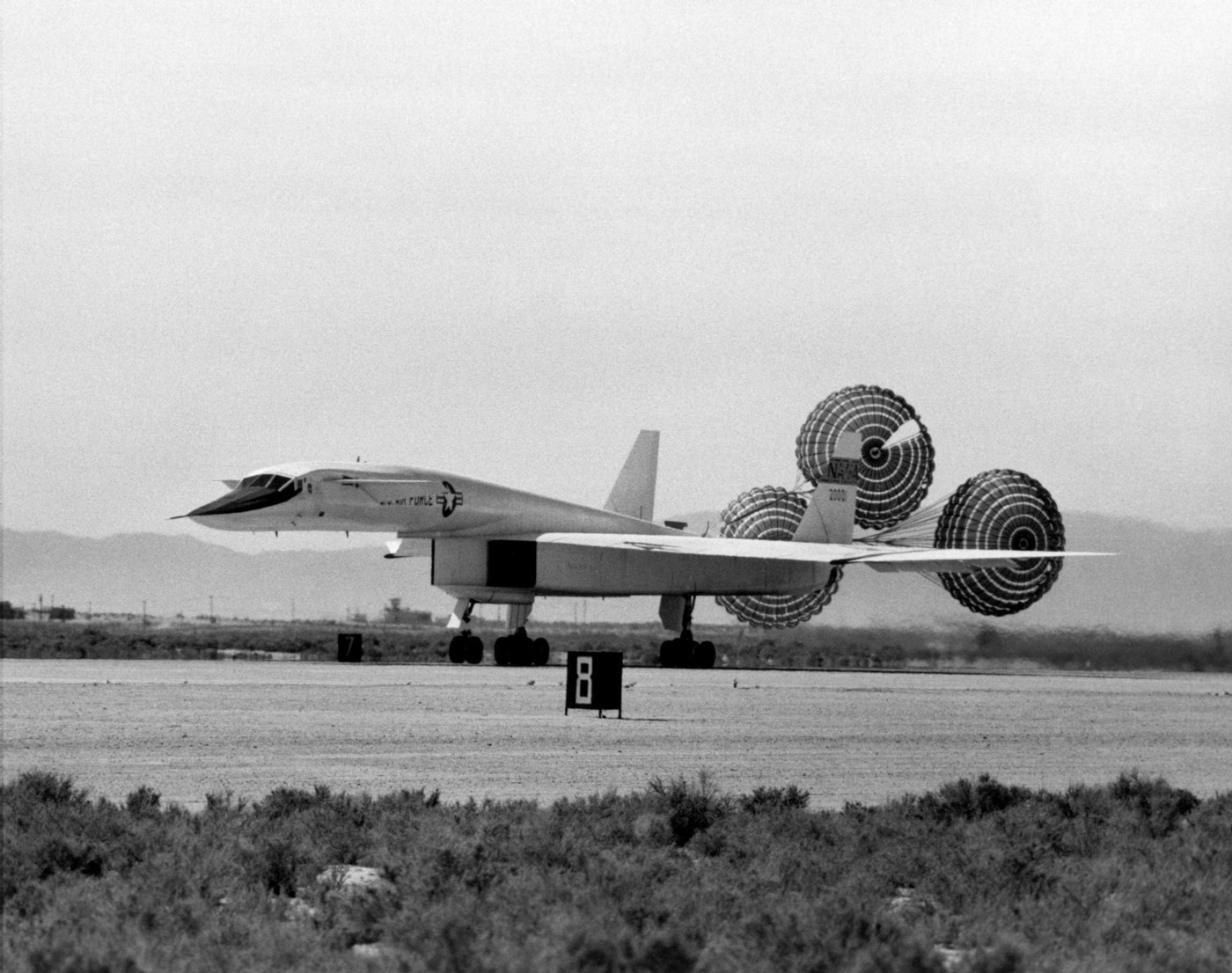
The XB-70 employed drag chutes to slow down during landings. Note the wing tips are in the extended position to improve handling characteristics at lower speeds. Image: U.S.A.F.
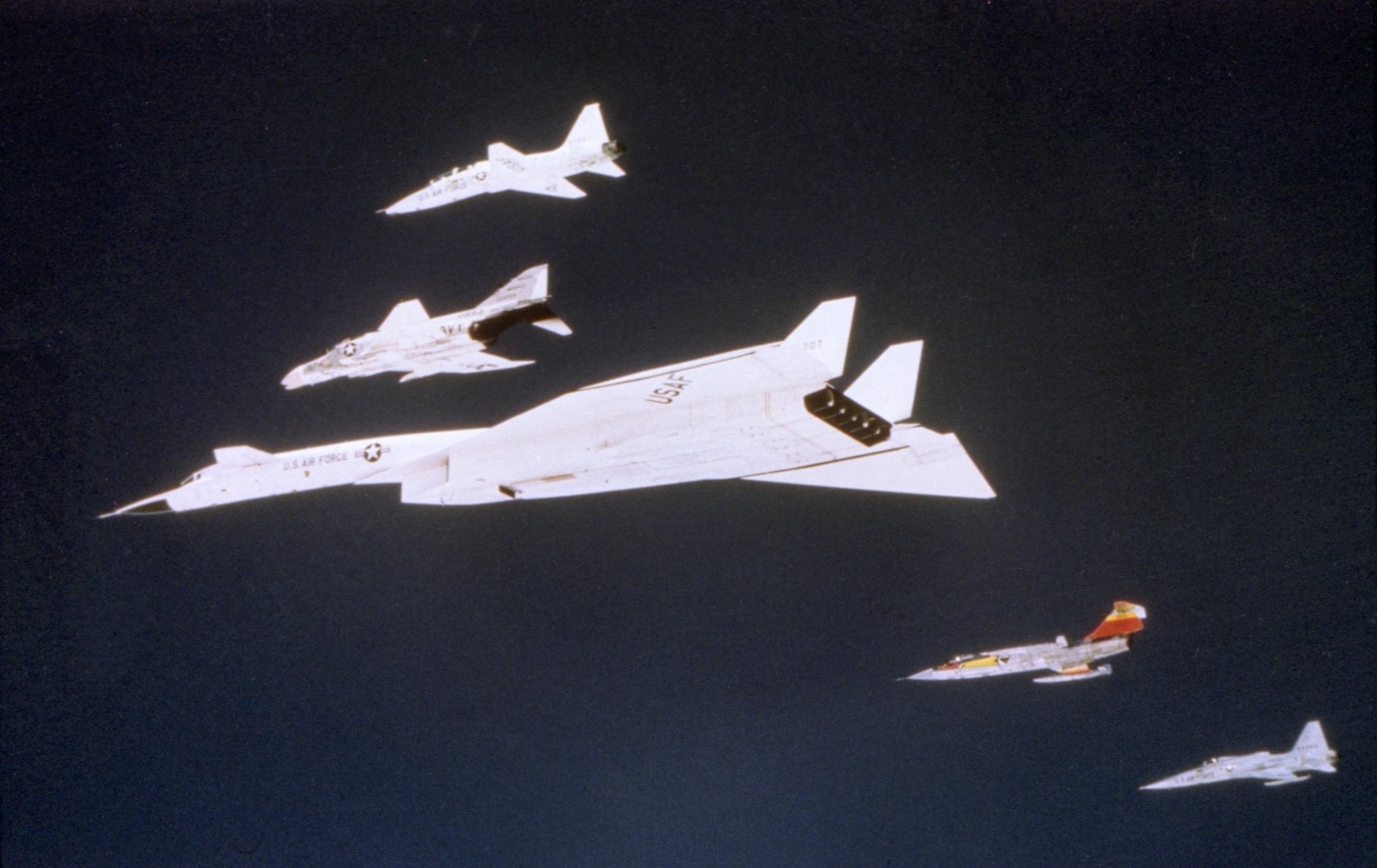
Shown is the ill-fated formation flight centered on the XB-70, flanked by a T-38A, F-4B, the F-104 orange tail and a YF-5A moments before the collision on June 8, 1966. Image: NARA
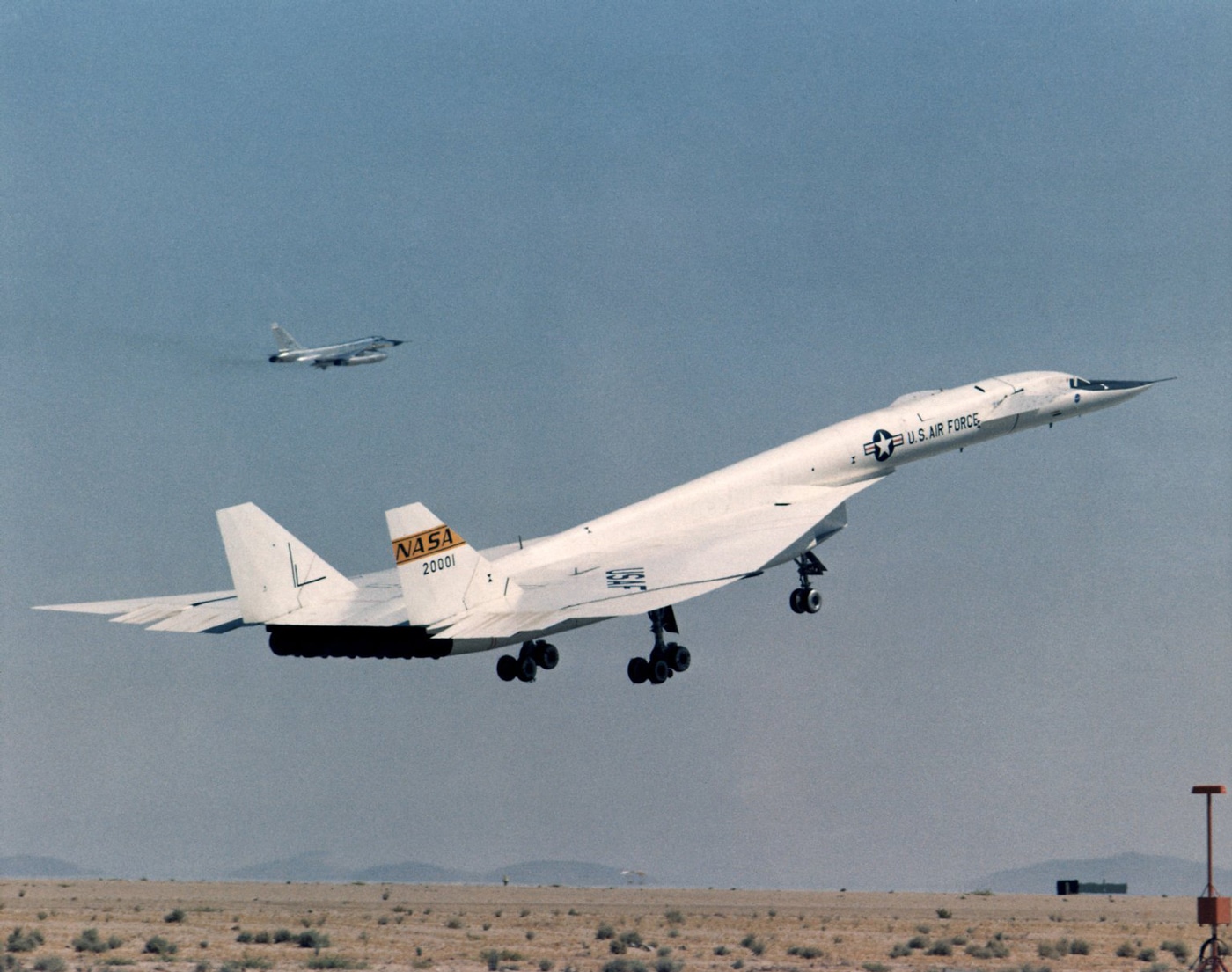
This photo shows XB-70 and escorted by a TB-58 chase plane. Although slower than the XB-70, the TB-58, a modified B-58, was able to keep up by flying lower and using tighter turns. Image: U.S.A.F.
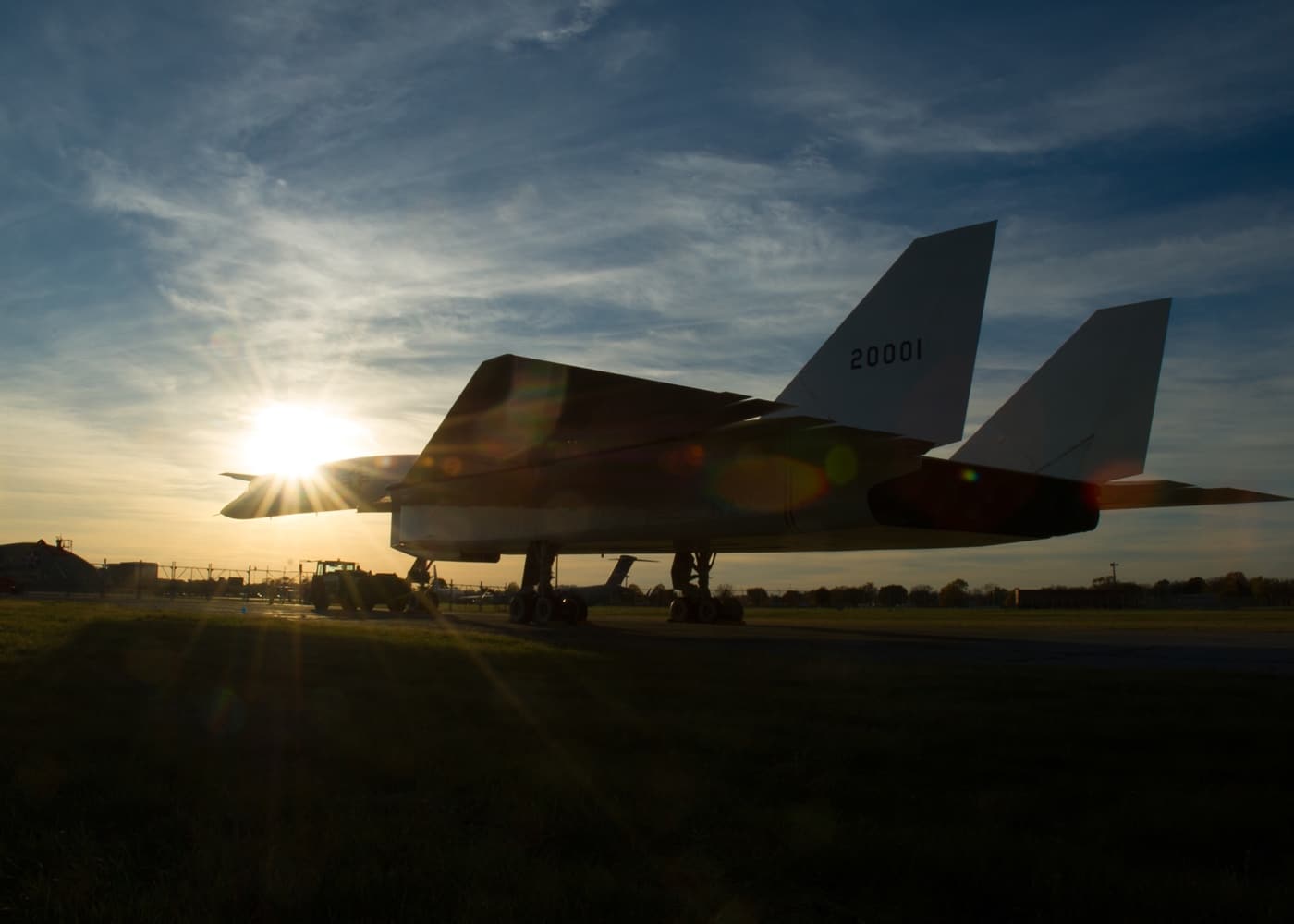
The remaining XB-70 Valkyrie bomber is on display at the National Museum of the United States Air Force.
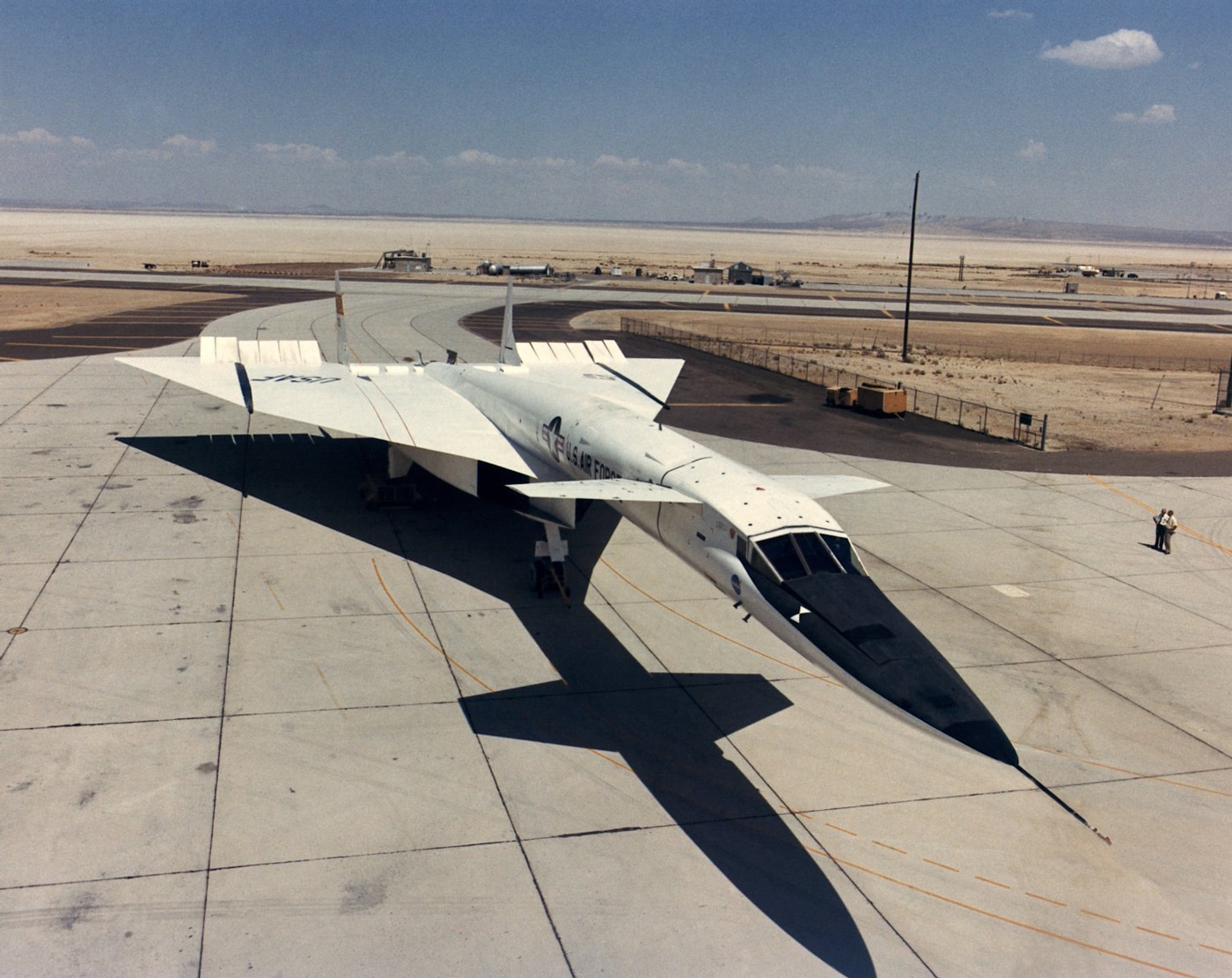
This photo shows the XB-70A parked on a ramp at Edwards Air Force Base in 1967. The XB-70 was the world’s largest experimental aircraft. Image: U.S.A.F.




